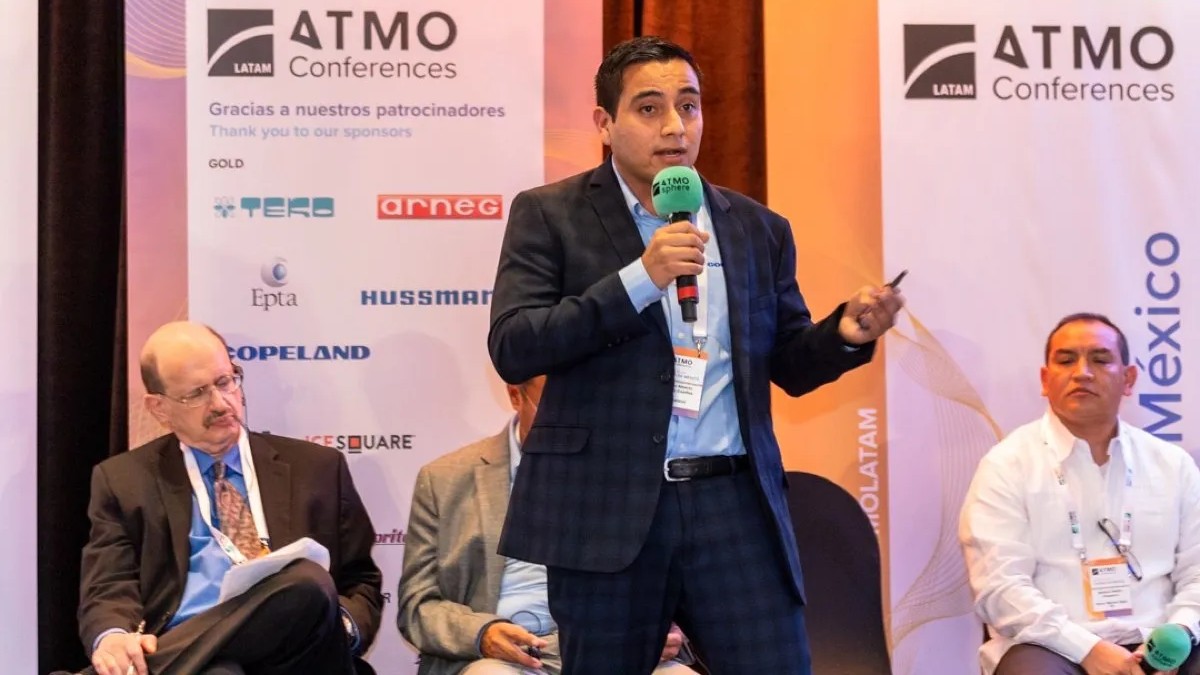Ammonia seen as ‘Worthwhile’ for large-capacity HVAC&R projects in Latin America
November 30, 2023

Ammonia (R717) is a “worthwhile” option for large-scale HVAC&R projects in Latin America (LATAM), according to Adolfo Santos, Sales Manager at Copeland, and Manuel Alarcón, Director of Engineering and Projects for ABE Refrigeración Industrial.
“When it comes to industrial systems with large capacity, the advantages of ammonia become increasingly evident, making it worthwhile to consider this refrigerant for new projects,” they said. “The main drawback is the level of toxicity; however, with proper training and adherence to standards, it is possible to prevent any associated risks.”
Santos and Alarcón delivered these remarks during their presentation in one of the Refrigeration Case Studies sessions at the ATMOsphere (ATMO) LATAM Summit 2023. The conference took place November 8–9 in Mexico City and was organized by ATMOsphere, publisher of Ammonia21.com.
Various applications
As detailed in their presentation, ammonia is the “ideal refrigerant” due to its thermodynamic and heat transfer properties, which allow for high efficiency with low environmental and climate impact.
It is also a readily available and cost-efficient refrigerant that is easy to detect. Ammonia-based systems are suitable for a range of temperatures and applications, are long-lasting and typically have low operating and maintenance costs, they explained.
To demonstrate its efficiency and efficacy, Santos and Alarcón presented case studies of two industrial projects using centralized ammonia refrigeration systems.
At a 23,296m2 (250,756ft2) distribution center for fresh and frozen produce, six single-screw Vilter compressors provide 4.9MW (1,398TR) in cooling capacity across six different medium- and low-temperature applications. In addition to the compressors, the centralized two-stage system includes 41 evaporators of several types and capacities and two liquid subcoolers and glycol heating for increased efficiency, with a COP of 4.4. The entire system contains around 25,000kg (55,115lbs) of ammonia refrigerant.
The second case study looked at a meat processing plant with 4,753m2 (51,160ft2) in refrigerated space. The two-stage system consists of eight single-screw Vilter compressors, 79 evaporators and liquid subcooling. It serves 20 different applications including instant freezing across four temperatures: from -40 to 2°C (-40 to 36°F). It provides a total cooling capacity of 3MW (872TR) with a COP of 3.6 and 1,500kg (33,069lbs) of ammonia.
To ensure optimum performance and safety, both systems include central monitoring and controls, including ammonia detectors, ventilation and safety valves.


